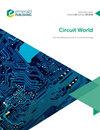一种用于插电式混合动力汽车的新型多输入DC-DC landsman变换器
IF 0.7
4区 工程技术
Q4 ENGINEERING, ELECTRICAL & ELECTRONIC
引用次数: 1
摘要
目的本文的目的是开发一种高精度、统一的最大功率点跟踪技术,该技术跟踪光伏阵列和风能转换系统的最大功率,(一种针对风能和太阳能的统一最大功率点追踪技术,以更高精度跟踪最大功率)。设计/方法/方法近年来,多输入直流-直流(DC-DC)变换器以节省更多的能量和实现更高的效率而备受关注。在再生制动过程中,车辆的动能被转换为电能,并进一步存储在电池中(此外,电池在再生制动期间通过将车辆的动能转换为电能量而充电)。在这样的过程中,只有逆变器的脉冲宽度调制方案被改变。为了给电动汽车充电,太阳能和风能这两种可再生资源结合在一起产生电力。因此,传达了电动汽车将使用各种来源和再生电力不间断地连续获得电力。发现通过广泛的仿真研究了所提出的系统的性能和有效性,并使用系统的原型进行了验证。结果证明,该系统的效率为95.2%,高于文献中现有的多输入DC-DC转换器。独创性/价值本研究提出了一种用于插电式混合动力汽车的新型多输入DC-DC landsman转换器。该方法为无刷直流电机的混合动力汽车提出了一种新的经济高效的技术。风电、电池和光伏板被用作拟议转换器的输入源。本文章由计算机程序翻译,如有差异,请以英文原文为准。
A novel multi-input DC-DC landsman converter for plug-in hybrid electric vehicles
Purpose
The purpose of the paper is to develop high accurate and unified maximum power point tracking technique that tracks the maximum power from both the photovoltaic (PV) array and wind energy conversion system, (an unified maximum power point tracking technique implemented for both wind and solar sources to track maximum power with higher accuracy).
Design/methodology/approach
In recent times, multi-input Direct Current- Direct Current (DC-DC) converter has attracted attentiveness, to conserve more energy and to achieve more efficiency. The kinetic energy of the vehicle is converted to electrical energy and further stored into the battery, during the regenerative braking (moreover, the battery gets charged during the regenerative braking process by converting the kinetic energy of the vehicle into electrical energy). During such a process, only the pulse width modulation schemes of the inverter are changed. To charge electric vehicles (EVs), two renewable resources as solar and wind are combined to produce electric power. Therefore, it was conveyed that the EV will be continuously getting power without interruption using various sources and regenerated power.
Findings
The performance and effectiveness of the proposed system are studied by extensive simulations and (are) validated using a prototype of the system. The results prove that the proposed system achieves an efficiency of 95.2%, which is higher than that of the multi-input DC-DC converters existing in the literature.
Originality/value
A novel multi-input DC-DC landsman converter for powering plug-in hybrid electric vehicles (HEVs) is proposed in the research. This method proposes a new cost effective and efficient technique for HEVs with brushless DC motors. Wind power, battery and PV panel are used as the input sources for the proposed converter.
求助全文
通过发布文献求助,成功后即可免费获取论文全文。
去求助
来源期刊

Circuit World
工程技术-材料科学:综合
CiteScore
2.60
自引率
0.00%
发文量
33
审稿时长
>12 weeks
期刊介绍:
Circuit World is a platform for state of the art, technical papers and editorials in the areas of electronics circuit, component, assembly, and product design, manufacture, test, and use, including quality, reliability and safety. The journal comprises the multidisciplinary study of the various theories, methodologies, technologies, processes and applications relating to todays and future electronics. Circuit World provides a comprehensive and authoritative information source for research, application and current awareness purposes.
Circuit World covers a broad range of topics, including:
• Circuit theory, design methodology, analysis and simulation
• Digital, analog, microwave and optoelectronic integrated circuits
• Semiconductors, passives, connectors and sensors
• Electronic packaging of components, assemblies and products
• PCB design technologies and processes (controlled impedance, high-speed PCBs, laminates and lamination, laser processes and drilling, moulded interconnect devices, multilayer boards, optical PCBs, single- and double-sided boards, soldering and solderable finishes)
• Design for X (including manufacturability, quality, reliability, maintainability, sustainment, safety, reuse, disposal)
• Internet of Things (IoT).
 求助内容:
求助内容: 应助结果提醒方式:
应助结果提醒方式:


